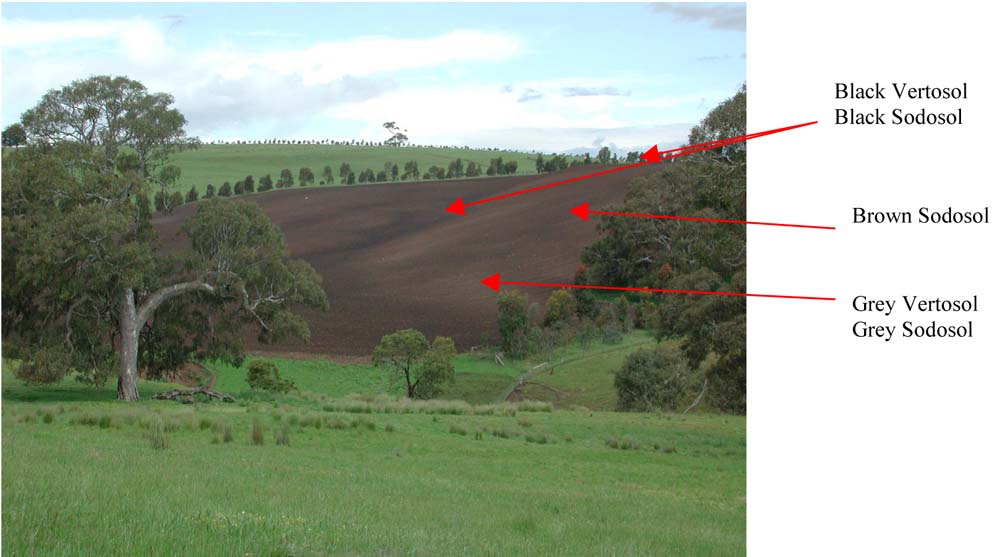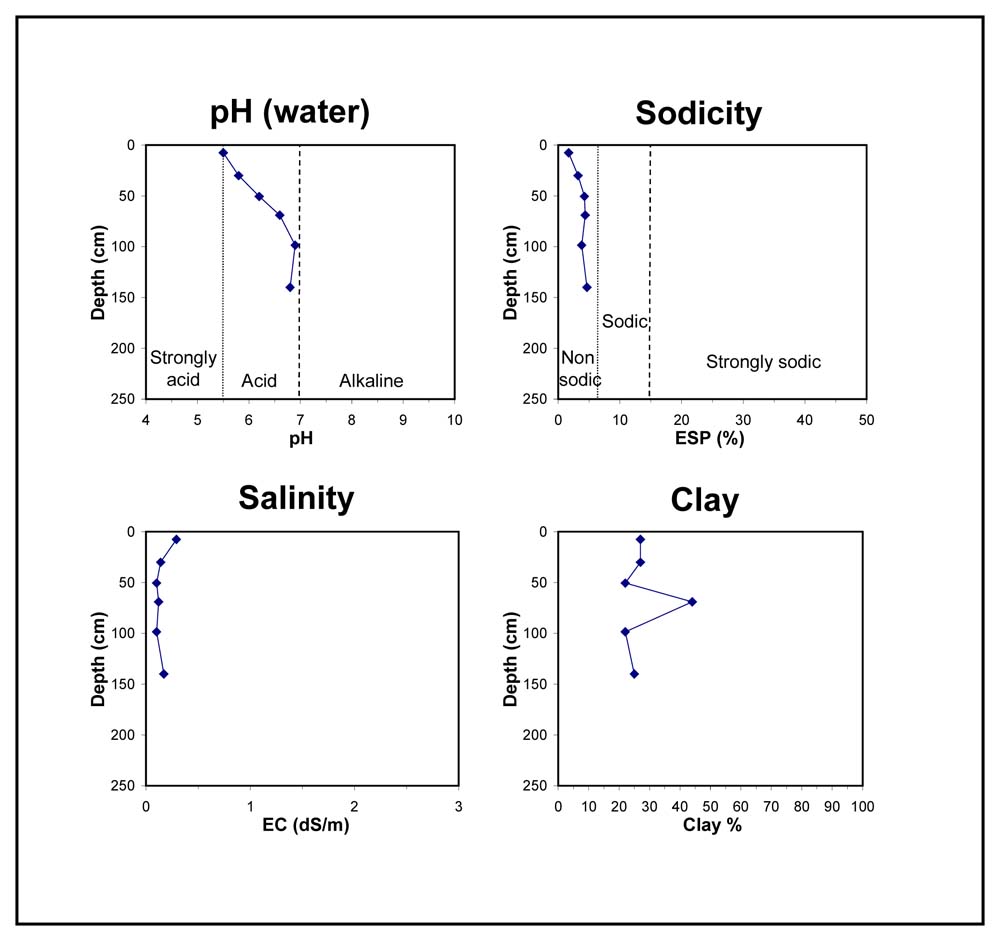GL9
| Site: GL9 | Land Unit: Merino Tablelands |
| Aust. Soil Class.: Vertic, Eutrophic, Brown CHROMOSOL (confidence level 1) |
 |
|
Site Description:
| Slope: 5% | Geology: Cretaceous non-marine sandstone |
| Landform pattern: Undulating rises | Position in landscape: Upper slope |
| Internal drainage: Imperfectly drained |
Soil Profile Morphology
| A11 | 0-15 cm | Very dark brown (10YR2/2) organic loam, strong subangular blocky structure (2-5 mm), firm consistence when dry, pH 5.5; transition to: |
| A12 | 15-45 cm | Black (10YR2/1) organic clay loam, weak structure, firm consistence when dry, pH 5.8; clear transition to: |
| Subsoil | ||
| B1 | 45-65 cm | Very dark grey (10YR3/1) light clay, massive structure, very firm consistence when dry, pH 6.2; clear transition to: |
| B21 | 65-85 cm | Very dark greyish brown (10YR3/2) light medium clay, sporadically bleached (10YR6/2) when dry, a few oxidised root mottles, moderate prismatic (20-30 mm) to subangular blocky structure (5-10 mm), strong consistence when dry, pH 6.6; clear transition to: |
| B22 | 85-115 cm | Very dark greyish brown (10YR3/2) fine sandy loam, moderate subangular blocky structure, strong consistence when dry, sand veins and organic staining present, pH 7; clear transition to: |
| B3 | 115-180 cm | Fine sandy clay loam, moderate prismatic to subangular blocky structure (5-10 mm), very strong consistence when dry, ferromanganiferous concretions are abundant, sand veins and organic staining present, pH 7. |
Key profile features:
- Ferromanganiferous pan at depth
- Acidic topsoil
- Subsoil cracks
- Deeper topsoil dispersive when worked when wet
- Subsoil dispersive when worked when wet



